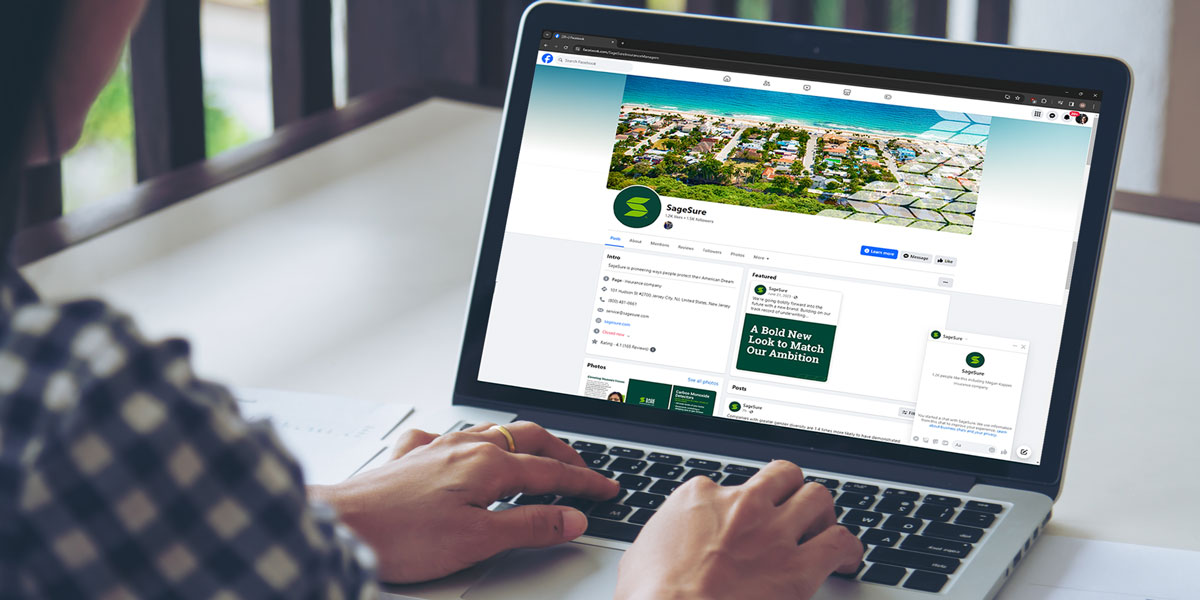
Don’t think a FORTIFIED roof is worth the investment?
Three reasons to safeguard your property with FORTIFIED roofing
July 5, 2023 — Homeowner insights | Insurance insights
Roofing standards and building code acceptance are inconsistent across states—an unsettling fact for any homeowner trusting their safety and protection to regulatory systems, but even more so for property owners in hurricane-prone areas.
To overcome the inconsistencies, the Insurance Institute for Business and Home Safety (IBHS) developed an optional roofing system that goes beyond building code requirements to better equip residential properties and commercial structures to withstand extreme conditions.
But the added protection has a cost.
Estimates suggest the additional building materials and labor to upgrade to a FORTIFIED roof range between $1,000 and $3,000 for a 2,000-square-foot home. These estimates can differ based on a number of variables such as roof size, roof geometry, and geographic location.
If you’re considering the benefits of a FORTIFIED roof but aren’t sure if it’s worth the investment, here are the top three reasons to upgrade your roof to the FORTIFIED standard.
1. FORTIFIED roofing standards overcome building code inconsistencies and ensure compliance
Building codes establish minimum construction standards to ensure the safety of the residents. They vary from state to state and even from county to county within a state.
Some states, like Florida, have mandated building codes, but others defer to counties to adopt the building codes.
For instance, Florida received a rating of 99 from a FEMA (Federal Emergency Management Agency) report that gives each state a number based on the hazard-resistance of their building codes on a scale of 0 to 100 (the highest score possible).
Alabama, on the other hand, doesn’t have statewide building codes, but the coastal counties of Baldwin and Mobile in Alabama have adopted stronger, storm-resilient building codes.
Even with proper codes in place, homes can be out of compliance without regulatory practices to oversee implementation.
A SageSure field study conducted in Florida after Hurricane Ian revealed the vast majority of observed homes with shingle roofs (including new construction) did not appear to have a sealed roof or secondary water barrier.
Without proper sealing, high winds and hurricanes cause shingles to lift, leaving the home exposed to the elements. If there is no secondary water barrier, water can enter the home and damage the interior and belongings. This can result in insurance claims that are more expensive. A sealed roof deck can reduce water intrusion by as much as 95%.
FORTIFIED standards supersede the traditional building codes that leave homes vulnerable to damage. More importantly, the evaluation process ensures that roofs are constructed to the set standards.
2. FORTIFIED roofing provides superior protection against severe weather
FORTIFIED roof standards are tested in a research facility that exposes actual-size homes to realistic storm conditions. Homes built to FORTIFIED standards can tolerate winds up to 130 mph, hail that is 2 inches in diameter and EF-2 tornadoes.1
But it doesn’t take hurricane-force winds to cause damage. Storms can produce winds up to 50 mph that can damage a standard roof.
Mitigating loss through building resilience is one way to reduce the financial burden of natural disasters. While a FORTIFIED roof cannot protect against everything, the FORTIFIED standard decreases the likelihood of a claim and overall claim cost.
3. FORTIFIED roofs provide a return on their investment
There are financial benefits to having a FORTIFIED roof, including FORTIFIED roof insurance discounts and increased home values.
Preventing claims before they happen is as important as having the right homeowners insurance coverage to recover from a loss. A FORTIFIED roof can reduce or eliminate damage from severe storms, and your insurance company may provide a discount for this benefit. Premium discounts for FORTIFIED roofs can be between 20% and 60%. Be sure to ask your insurance specialist about FORTIFIED discounts and what you need to do to qualify.
If you experience a covered loss and your roof needs to be replaced, talk to your agent about insurance premium reduction incentives to upgrade to a FORTIFIED roof. Some insurance companies also offer an endorsement that can be added to your current coverage and allows for your roof to be rebuilt to FORTIFIED standards should you experience storm damage in the future.
If you’re considering upgrading to a FORTIFIED roof, your home value may also increase. A research project conducted by a Mississippi-Alabama Sea Grant Consortium found that FORTIFIED roof designations are associated with a 2% to 4% increase in property value.2 Another study at Mississippi State University suggests the increase in property value could be as high as 8.4%.3 With 3% return on a $200,000 home, the value would increase $6,000, making the additional cost of a FORTIFIED roof well worth the investment.
When it comes time to put a new roof on your home, consider upgrading to the FORTIFIED standard. Your roofer, builder or contractor will work alongside a FORTIFIED evaluator to document and verify the entire construction process and confirm that the standards were met.
Protect your home and family with a FORTIFIED roof. With a FORTIFIED roof, you have peace of mind from consistent standards, superior weather protection, and a return on your investment. Your family, insurer, and bank account will thank you.
1. https://FORTIFIEDhome.org/roof/
3. https://scholarsjunction.msstate.edu/cgi/viewcontent.cgi?article=5347&context=td
